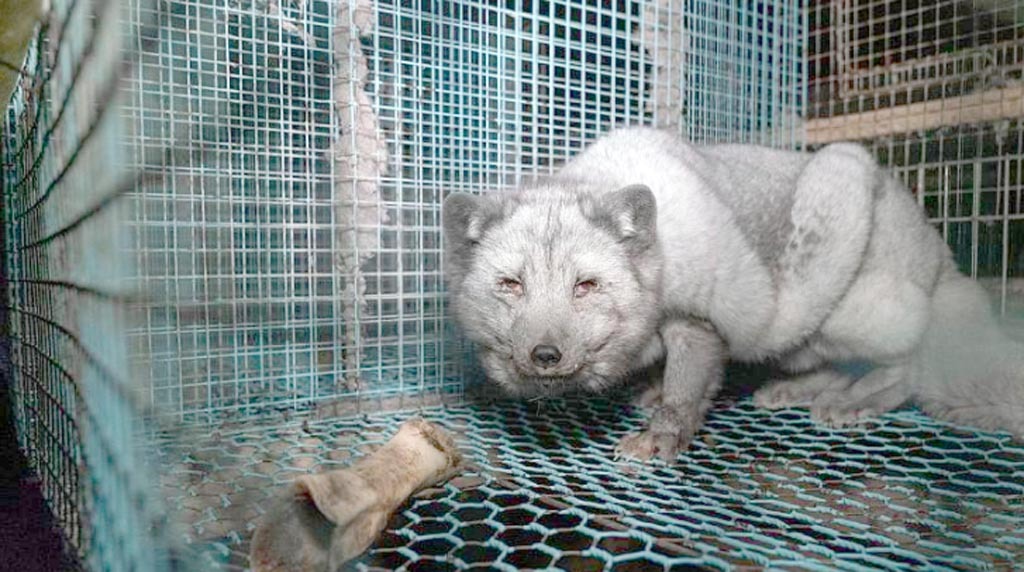Notifications
 admin
admin![]() -
February 14, 2022 -
Business -
Finland
Fox fur
-
2.4K views -
0 Comments -
0 Likes -
0 Reviews
-
February 14, 2022 -
Business -
Finland
Fox fur
-
2.4K views -
0 Comments -
0 Likes -
0 Reviews

Earlier this month, Italian fashion duo Dolce and Gabbana announced that a growing number of fashion houses ban animal fur. In addition, they have dropped animal fur in future collections in favor of sustainable faux "eco-fur" using recycled and recyclable materials. But apparently, Finland didn't get the memo that wearing fur is no longer in fashion.
Even though fur ranching has been banned or phased out in most European countries, foxes and raccoon dogs are still being killed for vanity fur use in Finland. According to Kristo Muurimaa from the Finnish animal rights group Oikeutta Elaimille, 'Justice for Animals,' "there's rows and rows of animals in small barren wire cages." In a fur farm in the Scandinavian country's western Ostrobothnia region, the activist says many beautiful foxes "are suffering from infected eyes, and other injuries like deformed legs are widespread. This is because the animals have been fattened and bred, so they grow to a huge size, three or four times their natural size."
A recent shock report from Euronews notes that Finland is one of the only countries where fur farming is entirely legal. In that story, Claire Bass, Executive Director of the Humane Society International UK, declares that "Finland is a massive outlier for all species, not just fox and raccoon dogs, and they produce about 96% of Fox fur in the European Union now."
Euronews also reported that the animals are bred into uncomfortable, unsanitary lives to satisfy a lingering demand for Arctic fox pelts across retail and luxury fashion markets. The site says that a British veterinarian, Marc Abraham, also visited the Finnish fur farm undercover and witnessed firsthand Arctic foxes with overgrown nails; In addition, bent wrist joints as the animals try to make themselves less uncomfortable by sitting back on their wrists. And a type of conjunctivitis is caused when the excessive skin around the eyes folds in and rubs on their corneas. He said, "It's just a miserable, horrific life for animals that are so used to being social and going exploring in the countryside… this is absolute exploitation of animals to the millionth degree."
Muurimaa noted that the foxes have been "grown" in these terrible conditions for less than a hundred years, which means they still have all their instincts left. He added that Arctic foxes typically roam for huge distances during the winter in the wild, but in Finland, they are kept in barren wire cages smaller than one square meter.
While countries like Denmark or Estonia produce a few thousand fox furs every year, and Poland around 30,000, it is noted that Finland made 1.2 million fox pelts during 2020 alone. Bass says in the story that the fox fur ends up in the wardrobes of wealthy consumers around the globe who value designer labels: "For fox fur, Russia is a big market. We know that a lot end up going to Russian consumers not necessarily being sold in Russia but, bizarrely, Greece is a big market because Greece is a popular holiday destination for more affluent Russians." Bass added that many European fur is still going to China—no surprise there—and the United Kingdom. "You only have to look around the Harrod's fur department to find lots of proudly proclaimed 'Finnish fox fur' on brands including Yves Saint Laurent and Fendi," Bass told Euronews.
So what can American consumers do to put a stop to the suffering of foxes in Finland? First, don't support designers who support cruelty. Yves Saint Laurent is owned by French luxury conglomerate Kering, which also owns brands like Gucci and Balenciaga, a favorite of the Kardashians. You can boycott those brands and sound off on social media by letting Kim Kardashian know she should be ashamed to shill for brands that support animal cruelty. For more information, visit peta.org.
Source: Pam Price
Photo credits: Oikeutta Elaimille (Justice for Animals)